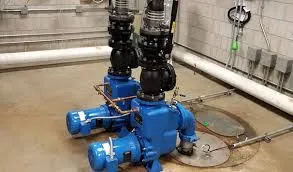Kannada
- Afrikaans
- Albanian
- Amharic
- Arabic
- Armenian
- Azerbaijani
- Basque
- Belarusian
- Bengali
- Bosnian
- Bulgarian
- Catalan
- Cebuano
- Corsican
- Croatian
- Czech
- Danish
- Dutch
- English
- Esperanto
- Estonian
- Finnish
- French
- Frisian
- Galician
- Georgian
- German
- Greek
- Gujarati
- Haitian Creole
- hausa
- hawaiian
- Hebrew
- Hindi
- Miao
- Hungarian
- Icelandic
- igbo
- Indonesian
- irish
- Italian
- Japanese
- Javanese
- Kannada
- kazakh
- Khmer
- Rwandese
- Korean
- Kurdish
- Kyrgyz
- Lao
- Latin
- Latvian
- Lithuanian
- Luxembourgish
- Macedonian
- Malgashi
- Malay
- Malayalam
- Maltese
- Maori
- Marathi
- Mongolian
- Myanmar
- Nepali
- Norwegian
- Norwegian
- Occitan
- Pashto
- Persian
- Polish
- Portuguese
- Punjabi
- Romanian
- Russian
- Samoan
- Scottish Gaelic
- Serbian
- Sesotho
- Shona
- Sindhi
- Sinhala
- Slovak
- Slovenian
- Somali
- Spanish
- Sundanese
- Swahili
- Swedish
- Tagalog
- Tajik
- Tamil
- Tatar
- Telugu
- Thai
- Turkish
- Turkmen
- Ukrainian
- Urdu
- Uighur
- Uzbek
- Vietnamese
- Welsh
- Bantu
- Yiddish
- Yoruba
- Zulu
Telephone: +86 13120555503
Email: frank@cypump.com
ಆಕ್ಟೋ . 10, 2024 16:58 Back to list
sump pump and ejector pump
Sump Pumps and Ejector Pumps Essential Tools for Flood Management and Wastewater Disposal
Sump pumps and ejector pumps are vital components of modern plumbing systems and play crucial roles in managing water flow and wastewater disposal. Both types of pumps serve distinct purposes and are engineered to address specific challenges homeowners and businesses face regarding water management. Understanding how each pump operates and their primary functions can help in selecting the right one for your needs.
Sump Pumps
A sump pump is designed to remove water that accumulates in a sump basin, typically found in the basement or crawl space of a home. These pumps are crucial in preventing flooding and water damage, particularly in areas prone to heavy rainfall or those with a high water table. When excess water fills the sump basin, the sump pump activates and pumps the water out of the house and away from the foundation, thereby reducing the risk of structural damage and mold growth.
Sump pumps come in two main types submersible and pedestal. Submersible pumps are submerged in the water within the sump basin. They are usually more efficient and quieter, but they can be more challenging to service if needed. Pedestal pumps, on the other hand, have a motor situated above the sump basin, making them easier to access for maintenance. While they may be less expensive upfront, they can be louder during operation and may require more space.
Ejector Pumps
Ejector pumps are used to remove wastewater from lower-level drains, such as basement bathrooms or laundry areas, where gravity alone cannot move the waste to the main sewer line. These pumps function by using a motor-driven impeller to create a vacuum that draws sewage and wastewater into the pump chamber. Once the chamber is full, the ejector pump discharges the waste through a connected pipe to the municipal sewer system or a septic tank.
sump pump and ejector pump

Ejector pumps are essential in homes where the plumbing fixtures sit below the main sewer line. They are typically installed in a sump pit and come equipped with a float switch to automatically activate the pump when the water rises to a specific level. It is crucial for homeowners to select ejector pumps that are durable and capable of handling the specific requirements of their household, including the volume of wastewater generated.
Common Applications and Considerations
Both sump and ejector pumps are critical in protecting homes from water-related issues. Sump pumps are primarily employed in flood-prone areas to prevent water damage, while ejector pumps are necessary for homes with plumbing systems that require wastewater to be lifted to a higher elevation.
When choosing between these pumps, several factors should be considered. For sump pumps, homeowners should evaluate the size of the sump basin, the expected volume of water, and the pump's horsepower. For ejector pumps, considerations include the distance the waste needs to be lifted and the type of sewage to be handled.
Conclusion
In summary, sump pumps and ejector pumps are indispensable tools for managing water flow and wastewater in residential and commercial settings. They not only provide protection against flooding and water damage but also ensure proper sanitation and hygiene by effectively handling wastewater. Homeowners should carefully assess their needs, consider the specific conditions of their properties, and invest in high-quality pumps that can reliably serve their requirements. Regular maintenance is also essential to ensure these pumps operate efficiently and effectively over time, providing peace of mind and protecting valuable investments in property and infrastructure.
-
Heavy-Duty Mining Sludge Pumps - Wear-Resistant Slurry Handling
NewsAug.02,2025
-
Horizontal Split Case Pump with GPT-4 Turbo | High Efficiency
NewsAug.01,2025
-
ISG Series Pipeline Pump - Chi Yuan Pumps | High Efficiency, Durable Design
NewsAug.01,2025
-
Advanced Flue Gas Desulfurization Pump with GPT-4 Turbo | Durable & Efficient
NewsJul.31,2025
-
ISG Series Vertical Pipeline Pump - Chi Yuan Pumps | Advanced Hydraulic Design&Durable Construction
NewsJul.31,2025
-
ISG Series Vertical Pipeline Pump - Chi Yuan Pumps | Energy Efficient & Low Noise
NewsJul.31,2025










